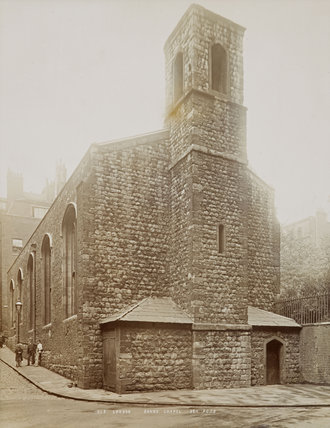144 (148) caravan
A group of travellers, possibly with both horses and camels.
144 (149) Kemal’s army
Mustapha Kemal Atatürk (1881-1938) had engineered the ejection of Greek forces from mainland Turkey
(1921-1923), the abolition of the sultanate (1922) and the Caliphate (1924), and the foundation of the
Turkish republic with himself as the first President (1923).
145 (149) Aleppo
Historic city in Syria, containing wonderful architecture from many periods.
145 (149) a rather tiresome Kurd
The Kurds are a proud people who have not been able to create their own nation and so find their lands
divided between Turkey, Iran and Iraq. Why this particular one should follow Samgrass around is an
intriguing question; there probably is a sexual connotation. Anyway, who took the photos of Samgrass if
Sebastian was not there?
145 (149) Pontus, Ephesus, Trebizond
Pontus was successively a Persian satrapate, an independent Kingdom and a Roman province in what is now
north-eastern Turkey.
The city of Trebizond (Trabzon) lies within old Pontus. The city gained importance as an artistic, cultural, and commercial centre during the Middle Ages when it was the capital of the Trebizond Empire, which lasted from 1204 until it was conquered by the Ottoman Turkish sultan Mehmed II the Conqueror in 1461.
Ephesus was an ancient Greek city on the western coast of Asia Minor, now in Turkey. It was the site of the temple of Artemis, one of the Seven Wonders of the World, and later an important centre for early Christianity. Saint Paul addressed one of his letters to the Ephesians.
The order of the locations he mentions indicates Mr Samgrass’s unease - there is no logic to it.
145 (149) Krak-des-Chevaliers
A marvellously well-preserved Crusaders’ fortress (modernised from about 1142) in Syria. Its Kurdish
predecessor had first been given to Tancred Prince of Antioch (1072?-1112) and then handed over to the
Knights Hospitaller, who built the present structure. The castle was never taken by siege; its fall to
Sultan Baibars in 1271 was owing to trickery.
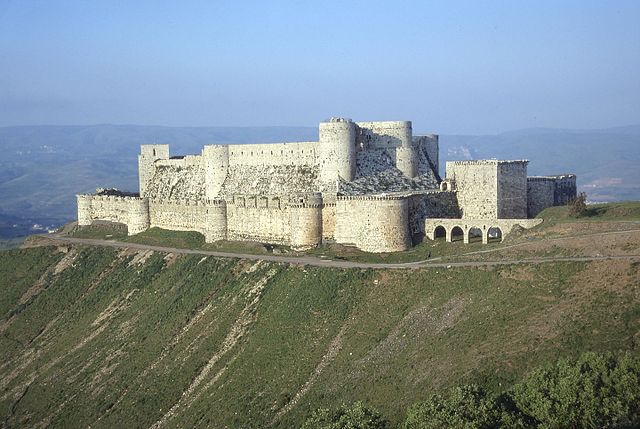
145 (149) Samothrace
A Greek island (Samothraki) in the north-eastern Aegean Sea, it was the centre of an ancient cult. The
famous statue known as ‘the Winged Victory’, now in the Louvre, was discovered there.
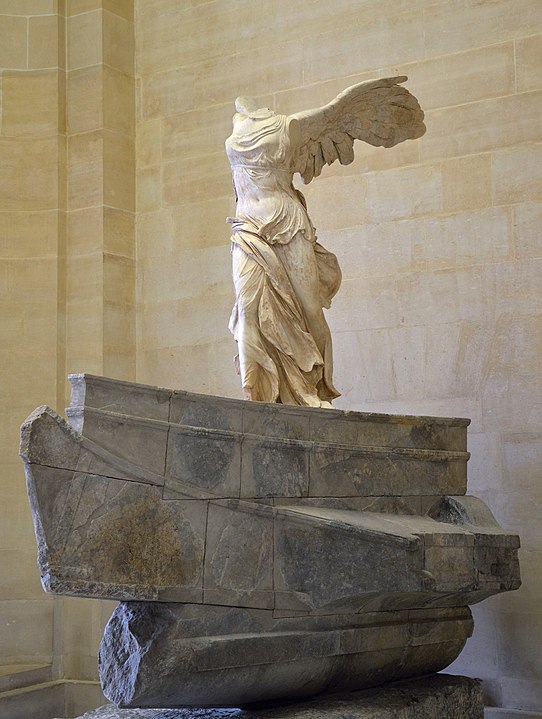
145 (149) Batum
Now Batumi, a popular health resort in Georgia and a place of ancient Greek settlement; Batumi is the
capital of the Autonomous Republic of Adjara, which forms part of the republic of Georgia. The process of
complete integration into Georgia appears to be under way (2007). Batumi has become an important
oil-exporting city.
145 (150) Beirut
Capital city of the Lebanon.
145 (150) Constantinople
Ancient city, until a year before the time of these events capital of the Ottoman Empire. Its name was not
changed to Istanbul until 1930.
146 (150) Cook's
The famous British travel agency.
147 (152) Île St-Louis
One of the two islands in the River Seine in the centre of Paris.
147 (152) Louvre
The famous art museum in Paris which contains many masterpieces and also many dreary pictures in French
public style.
147 (152) Picabia
Francis Picabia (1879-1953), popular French avant-garde artist of Cuban-Spanish descent. He painted in
almost every major contemporary style and was one of the first Dadaists. Charles seems to feel that he has
facility rather than genius, though since then some critics have praised his refusal to be bound by
consistency as a comment on the destructive values of conventional art.
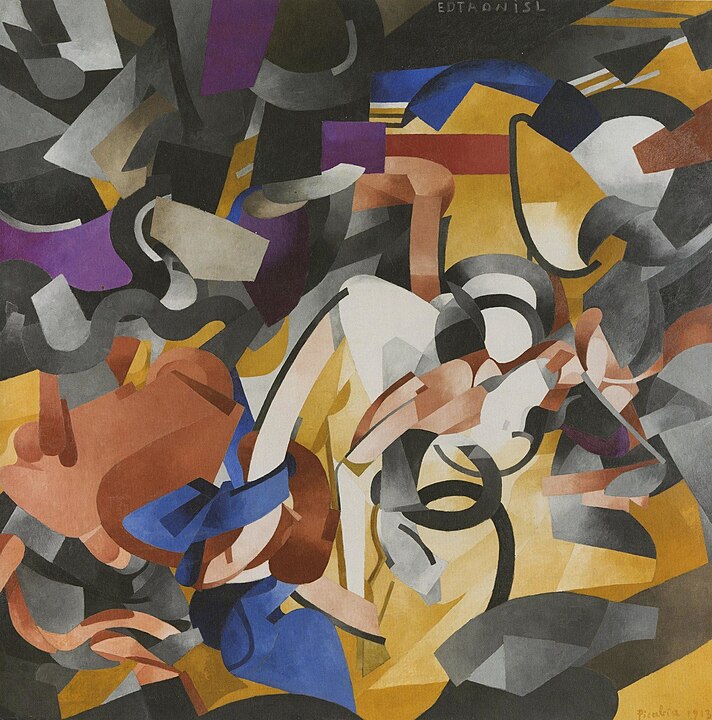
147 (152) Vogue
Popular magazine aimed at the wealthier classes advising them on fashion, life-style and in-places.
147 (152) Delacroix
Eugène Delacroix (1798-1863), a French painter whose paintings exemplified 19th-century Romanticism. His
work emphasises colour and movement.
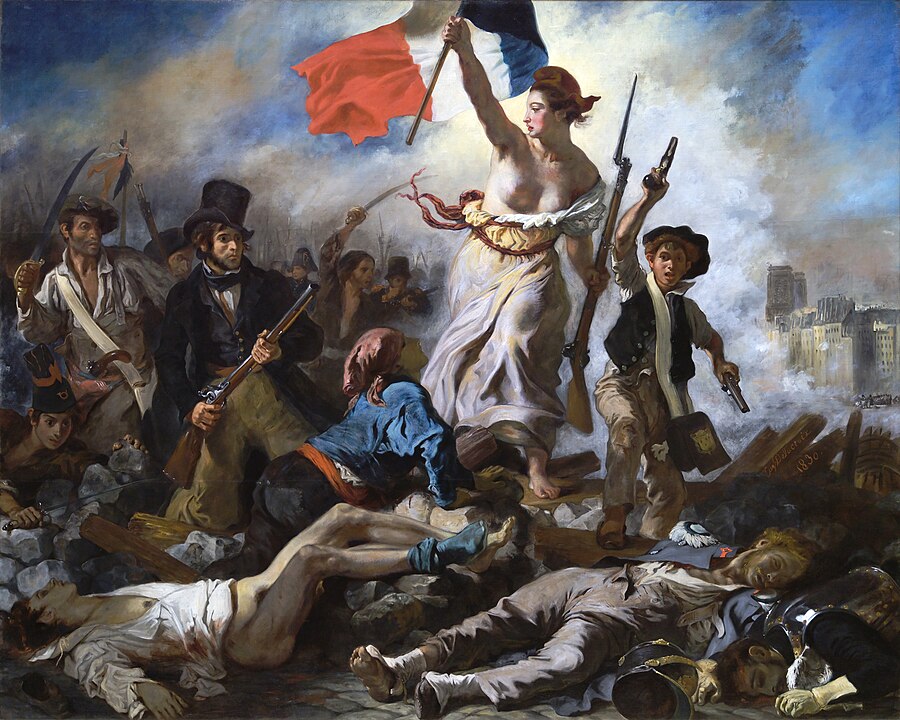
147 (152) 'Great Bosh'
i.e. worthless rubbish. EW was something of an artist himself, mainly in drawing and design. (He did six
line drawings for his first novel Decline and Fall.) He did however come early to think that modern art was
on a wrong course. Picasso was a particular bête noire for him.

152 snubs to her [Only in Am. Ed.]
An expression of derisive dismissal, meaning, I understand, something similar to Nuts to her! in American
usage.
149 (152) potin
‘row’ (French)
150 (155) Druses
Adherents of a religion which is an offshoot of Islam, found mainly in the Lebanon and Syria. The Druse
hold, with Islam, that the Qur’an is sacred, but have other religious texts. They believe in a single God
and recognize seven major prophets, including Adam, Abraham, and Jesus. They differ strongly from Islam in
believing in the transmigration of the soul : at death, one’s soul is instantaneously reborn into another
life until eventually it unites with the Cosmic Mind or God's Will. They believe heaven and hell to be
spiritual in nature.
150 (155) patriarchs
A bishop who is called the patriarch heads many of the old Christian churches of the East. The orthodox
churches have nine patriarchs and the Eastern Catholics have seven. The Archbishop of Constantinople is the
Ecumenical Patriarch, i.e. senior in honour in the Orthodox churches.
150 (155) icons
Holy paintings of Christ, the Virgin Mary or saints; they are characteristic of the East and are painted on
wooden panels. EW spelt the word eikons in the first edition of BR.
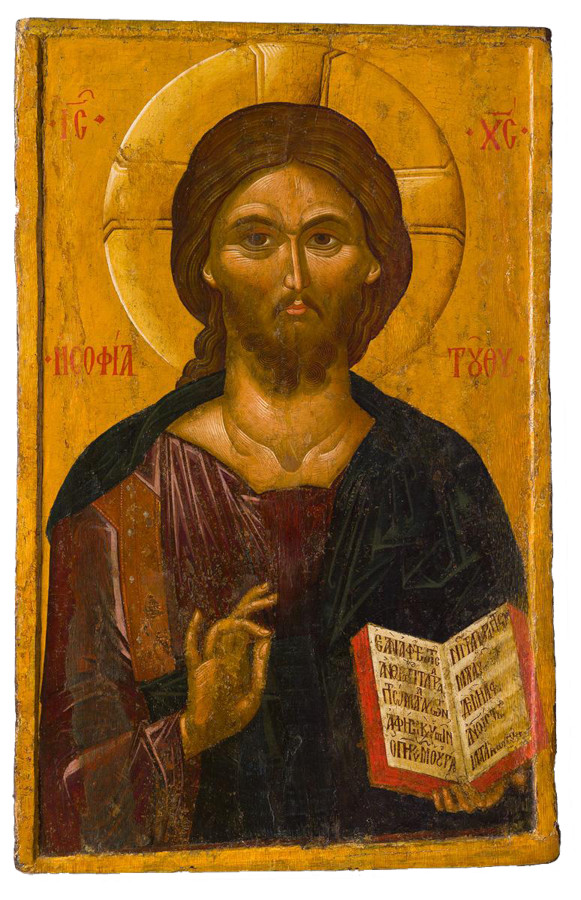
150 (155) Romanesque
A title applied to architecture erected in Europe between the time of the ancient world and that of the
Gothic developments beginning in the twelfth century. It was often based on circular forms and so had
rounded arches, semi-circular apses and barrel vaults as common features.

150 (155) Maronites
Christian Arab members of an oriental church in communion with the Pope but with their own distinctive
regulations and liturgy. They were originally a group of Christians who gathered around the hermit Maron
near Antioch in Syria in about 400. They now live mainly in the Lebanon, and their leader is the Patriarch
of Antioch.
150 (155) The Diary of a Nobody
Amusing account of
the life and bumbling misadventures of a lower middle class clerk and his family in late Victorian London,
written by George Grossmith (1847-1912) and illustrated by his brother Weedon (1854-1919). It was first
published in serial form in Punch in 1888-9. EW spent the Christmas of 1946 collating the book (an
extended version published in 1892) with the serial.
151 (156) Tinkerbell
The horse is obviously named after the fairy in Peter Pan by Sir James Barrie (1860-1937). The play was first performed in
1904 and had already reached a peak of popularity.
152 (156) dipsomaniac
A now dated term for a person with an uncontrollable craving for alcohol.
152 (157) Military Governor at Rhodes
From 1912 to 1943 Rhodes was under Italian rule, so the Governor would have been an Italian.
153 (158) Tokatlian
An hotel at Constantinople.
153 (158) Piraeus
The port of Athens, lying some 6 miles (10 Km) from the capital.
153 (158) Alexandria
The ancient city in Egypt, originally founded by Alexander the Great.
153 (158) Mediterranean Fleet
As a great naval power at that period, Britain maintained several fleets. One of them, the Mediterranean
Fleet, was based at Gibraltar, Malta and Alexandria.
154 (159) fib
A childish word for a lie. Its childishness perhaps conceals a harder truth : Sebastian is already using
lies to get his way in a form of behaviour which is habitual to an alcoholic.
155 (160) Grand Tour
Charles is sarcastically comparing Mr Samgrass’s recent confused journeyings with the lengthy and purposeful
residences in centres of civilisation undertaken by British gentlemen from the 17th to the 19th centuries.
156 (151) the peke
i.e. the pekinese dog, Julia’s pet.

156 (162) Kenya
Then part of the British Empire, Kenya (pronounced ‘Keen-ya’ in 1923/4) had a high plateau which was
tolerably fertile and possessed a climate similar to Europe’s. It was an area where many farmers from
Britain, often wealthy and well-born, settled.
157 (162) monomaniac
A person obsessed with a single idea, here hunting.
157 (162) Notre Dame
The great cathedral of Paris on the Île de la Cité, almost overlooking the Île St-Louis.
[Ed. Note: Tragically, the great cathedral caught fire in April of 2019, destroying the flèche and the oak beams supporting the lead roof. Luckily, through the work of over 500 firefighters, the façade, towers, walls, buttresses, and stained glass windows were saved. It reopened December 7th, 2024. ]

158 (163) drawing the home woods
A hunting term meaning that the hounds are following the scent into the wood.
158 (164) Postmaster-General
The government minister charged with overseeing the direction of the Post Office and its associated
functions. It was thought in politics to be a sign of failure not to be given a less humdrum job.
159 (164) antediluvian
Dating from before Noah’s flood, and so ancient-seeming.
159 (165) Zürich
A city in Switzerland, already noted as a centre of psychoanalysis. Borethus is a fictional name.
160 (166) spiffing
Childish slang for ‘superb’.
171 (166) Captain Morvin's Riding Academy
I have not been able to find out anything about this outfit. It may be based on the Academy run by Captain
J.H. Hance near Madresfield Court, Malvern, where EW learned to ride, though I have no reason for saying so
other than my suspicion that Morvin is a childish corruption of Malvern.
This Captain Hance is mentioned in the Memories of Sir Maurice Bowra. Bowra came across him when he was being trained in World War I to ride a horse and become an officer in the Royal Field Artillery. Hance treated his charges like fools and did not hesitate to use extreme language. (He seems to have done the same in civilian life later.) For example, he shouted at one unfortunate horseman, You’re not a cadet. You’re an old Piccadilly prostitute on a night-commode!
[Ed. Note: The book is Memories, 1898–1939; Hance is described in the 4th chapter, "The Army," pp. 76-7 in the Harvard University Press printing, 1967.]
162 (168) The Times
The London daily newspaper of great repute then and for a long time after.
164 (170) Frenchified
It seems that the nuns at Cordelia’s convent school were French and taught a handwriting style which they
had learned at school. A French person’s handwriting is even now very different from an English person’s.
164 (170) sneaked
Here means purloined or just borrowed.
164 (170) awful row
Cordelia’s language is very schoolgirlish.
164 (170) there goes a packet
Rex Mottram thinks he has wasted a large amount of money.
164 (170) concierge
A distinctively French character, usually a woman, she acts as caretaker to a block of apartments and is
always ensconced by the main door. She sometimes lives in the building too.
165 (171) Travellers'
A club. Gambling is a central activity here.
165 (171) Ciro's
An expensive restaurant intended for customers from high society. The original Ciro’s had been created at
Monte Carlo when James Gordon Bennett, the heir to the founder of the New York Herald, grew angry at slow
service at his favourite restaurant there, bought it, and renamed it as Ciro’s. Today there are many Ciro’s
all over the world, though none now in Paris (as far as I know).
[Ed. Note: Cliffe is right, there is no Ciro's in Paris; there is—in the 16th Arr.—an Italian restaurent called Le Ciro, which seems to have no relation. I reccomend this fascinating website for a more in-depth look at the legacy of Ciro's restaurant.]
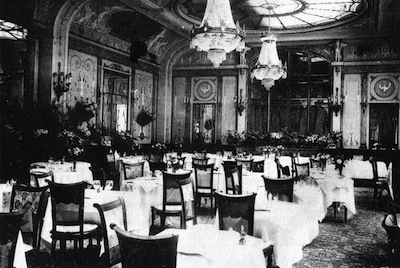
165 (171) Paillard's
Paillard’s was one of leading restaurants of Paris, so Rex’s ignorance of it may be considered a little
surprising. The restaurant was created in 1880 when M. Paillard took over an establishment situated at the
corner of the Rue de la Chaussée-d’Antin and the Boulevard des Capucines from the Bignon brothers. According
to Larousse
Gastronomique, ‘Favourite dishes were chicken Archduke, Georgette potatoes, calves’
sweetbreads with asparagus tips, fillets of sole Chauchat and, above all, stuffed duck, rivalling the duck
au sang of the Tour d’Argent.’
The culinary term paillard is of course named after the famous chef, who trained under the great Escoffier himself. It is a thin slice of veal (or now, any meat) pounded even thinner until it is translucent and then grilled or fried for a few seconds only.
166 (171) oseille
sorrel
166 (171) caneton à la presse
Duckling served with a sauce prepared from its own pressed juices. Usually the duck is placed in the duck
press after its breast meat has been removed for cooking. It was EW’s wife Laura’s favourite dish; they ate
it in Paris on the evening of their wedding day.
166 (171) caviare aux blinis
Caviar served with Russian pancakes.
166 (172) 1906 Montrachet ... Clos de Bère of 1904
Excellent wines from Burgundy. Montrachet is a Grand Cru white wine of intense flavour and loveliness; Clos
de Bèze a superb red from the commune of Gevrey-Chambertin.
166 (172) exchange
i.e., the exchange rate of French francs to the pound. The French franc was not stabilised until 1926.
166 (172) apaches
Members of the criminal class of Paris often thought to dominate bars and similar places. In origin they
were unemployed and disaffected youngsters who then developed links with the underworld.
167 (173) "'It doesn't matter what people call you unless they call you pigeon pie and eat you
up'"
This is a proverb from Charles’s childhood : his nanny or his mother might have used it to him when he was
in a temper and using strong language. It has a similar meaning to ‘Sticks and stones may break my bones,
but words will never hurt me.’
168 (174) peg out
i.e. die
175 Pathetic Fallacy [Only in Am. Ed.]
This is the name given to the propensity of human beings to attribute emotions or human characteristics to
inanimate objects. It is rarely done for rational reasons and so is very suspect in many eyes.
170 (176) we don't take much account of Catholics in Canada
It is a remarkable indication of Rex’s insensitivity even to his own country’s character that he can so
discount half the population! Clearly his acquaintanceship is only with English-speaking Canadians.
170 (176) 'promises'
Non-Catholics planning to marry Catholics were generally required to promise solemnly to honour their future
spouse’s religious practices and to bring their children up as Catholics.
170 (176) Bratt's
The name recalls Pratt’s, a gentleman’s club of some repute in London, but the club is actually modelled on
White’s, one of EW’s clubs. It appears in several of his novels.
170 (176) North Gridley
In Britain there is no such parliamentary constituency. Indeed there is mercifully no such town as Gridley.
170 (176) Rent Restrictions
The laws regulating landlords and rents were under discussion in this period. The Labour Party (in
government for ten months in 1924) had as a concern the easing of restrictions on tenants though events
proved that it had no time to do anything about it.
170 (176) the other thing
i.e. sex
177 St. Margaret's, Westminster [Only in Am. Ed.]
The chapel of the Houses of Parliament and so a place in which Rex, as a Member of Parliament, would be
expected to get married. Catholics would not normally go to services there.
171 (177) Monte Carlo
A district of the principality of Monaco on the Mediterranean coast. It has the Casino and the Opera House.
171 (178) Continental Daily Mail
The Daily Mail was a respected London newspaper of Conservative views. At that time it published a
Continental edition printed on thinner paper which was available in Paris late on the day of publication.
171 (178) Savoy Chapel
Julia later explains to Charles how sordid the whole affair had been. She points out that the Savoy Chapel
was ‘the place where divorced couples got married in those days - a poky little place’.
The Chapel in fact has an interesting history. Savoy is today a province of France but in the Middle Ages was a more-or-less independent dukedom. King Henry III of England married Anne of Savoy and so began the Anglo-Saxon involvement with the word Savoy. Her uncle Peter of Savoy built a palace in London which contained the original Savoy Chapel; both were destroyed in the Peasants’ Revolt (1381). On its site Henry VII started to build the Savoy Hospital for homeless people in the last years of the fifteenth century; it was not completed until 1512. It was huge, with a nave 200 feet long designed to hold a hundred beds. All that now remains of that great endeavour (dissolved in the Reformation) is the side chapel we call the Savoy Chapel, though the hotel and the theatre which were later built on the site were also named Savoy.
The Chapel is in fact in the private possession of the monarch, and has been since 1937 the official chapel of the Royal Victorian Order. The fact that the chaplain is answerable only to the monarch and not to the church authorities allowed divorced people to book it for remarriage.
